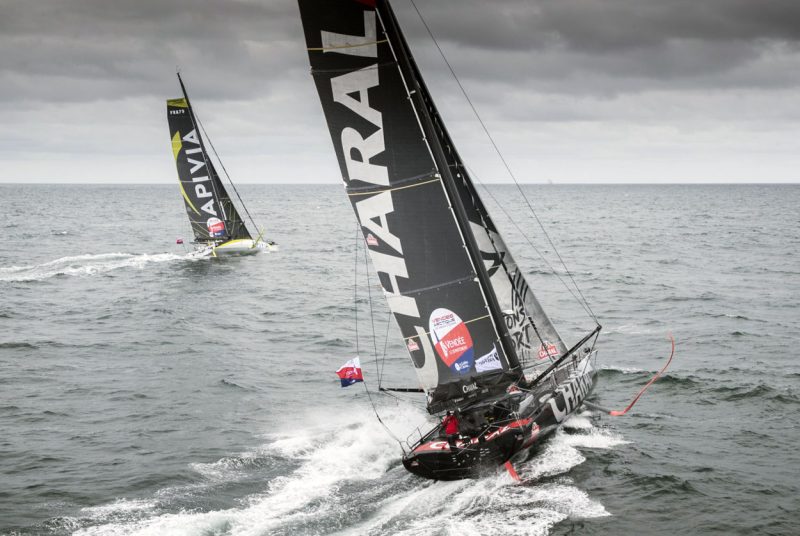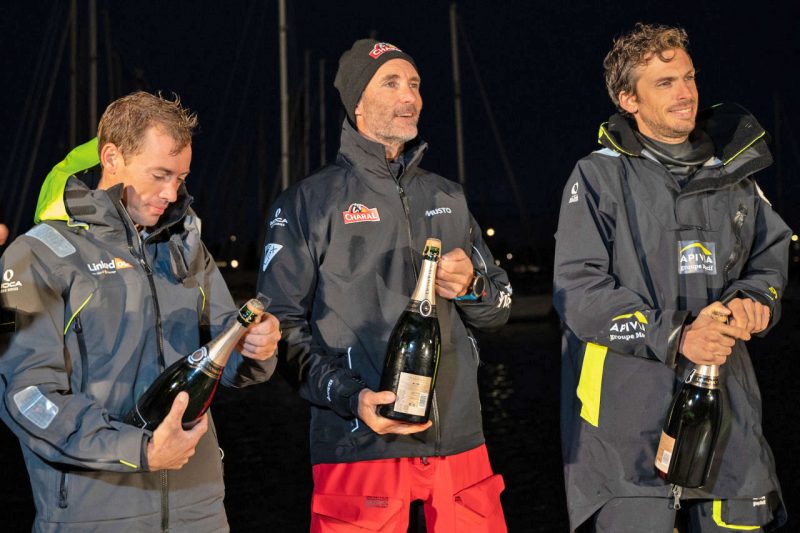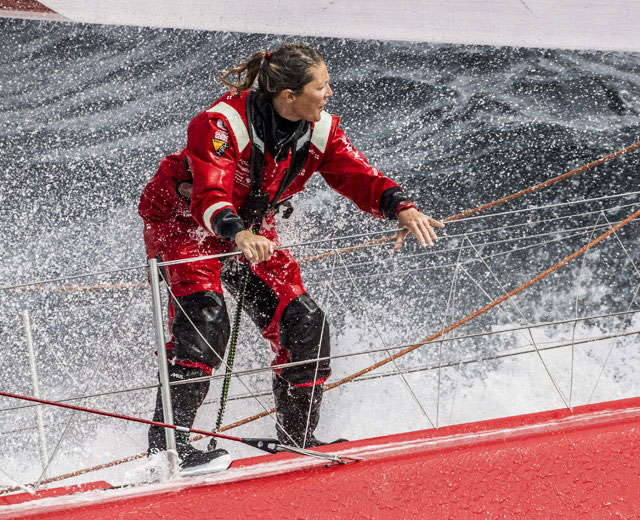
Thrilling First-Ever Vendée-Arctique Wraps Up
The first major ocean race of the COVID-19 era has drawn to a close, but not before providing some of the closest and most thrilling IMOCA racing of all time. Never before has the sport — and the class — seen a race where boats were overlapped and racing within sight of one another for thousands of miles.

After each turning mark in the inaugural Vendée-Arctique race, much of the fleet endured a restart of sorts, which kept the racing incredibly close. When the dust settled, Jérémie Beyou on the mighty Charal landed on the top step of the podium. The first boat launched of this new generation of IMOCA 60s, Charal had been plagued by reliability issues when she was brand-new, but with two years of development now under their belts, Beyou and Charal are looking highly refined in the final run-up to the Vendée Globe.

Less than an hour back after close to 3,000 miles of racing, Charlie Dalin on Apivia took second place. After winning last year’s doublehanded Transat Jacques Vabre race alongside the legendary Yann Eliès — the last race to take place on the IMOCA circuit before this one — Dalin and Apivia have continued to cement their positions as pre-race favorites for the Vendée Globe. Rounding out the podium was Thomas Ruyant and his new Guillaume Verdier-designed LinkedOut. This top trio of new-generation foiling IMOCAs was just a slight cut above the rest of the fleet during this entire race. They vied for the top position, oftentimes fully overlapped, for the entire complex Vendée-Arctique course.

Combined with Brit Alex Thomson, who was MIA to complete his own solo qualifying sail, we would be fairly confident to say that the winner of the next Vendée Globe will likely come from this group. Also hugely impressive in the Vendée-Arctique was fellow Brit Samantha Davies, who finished fourth in the two-generation-old boat Initiatives-Coeur. Sailing a boat that has landed on the podium of the Vendée Globe during the last two editions, Davis could find her way back there in this upcoming race.

Rounding out the top five was Kevin Escoffier on PRB. He was making his solo debut in the IMOCA class. While new to solo racing, Escoffier has set round-the-world records on the famous Banque Populaire V maxi-trimaran as well as winning the Volvo Ocean Race on Dongfeng. An engineer with an ability to fix most problems that arise on board, Escoffier, as well as Davies, will serve as a dark-horse favorite during the next Vendée Globe. Should the top new boats break, these two could very well assume their place. Other standout performers were Boris Hermann on SeaExplorer/Yacht Club de Monaco and Isabelle Joschke on MACSF.
Leaving Les Sables-d’Olonne, France, on July 4, the fleet encountered heavy weather during the first couple of days of racing while making their way NNW to a mark just southwest of Iceland. After the initial low-pressure system and another band of pressure behind that, it was mostly light air and transition zones followed by a moderate flow of pressure before the next path of light air. While not indicative of a mostly downwind and heavier-pressure round-the-world course, the Vendée-Arctique has shined a light on just how competitive the next Vendée Globe race is likely to be. The Vendée Globe begins on November 8 from Les Sables-d’Olonne.
